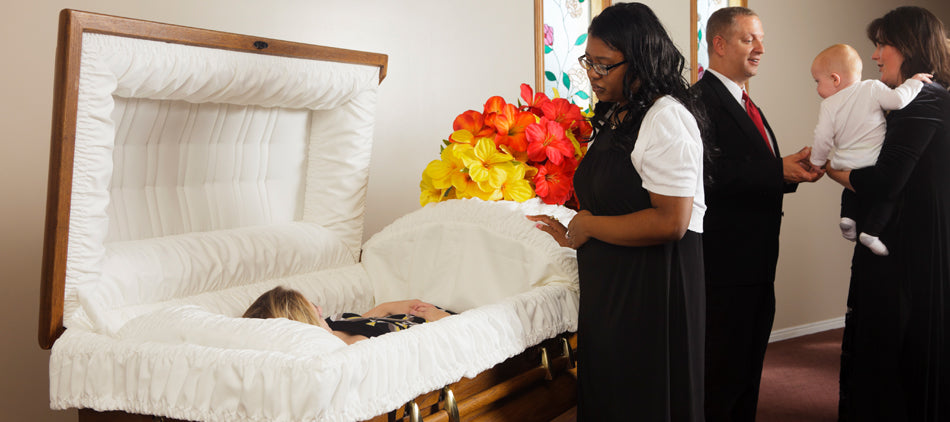
Attending a Funeral
Funerals are structured around the life of the deceased. The person’s religious preference (if applicable) and personal wishes regarding their arrangements will play a prominent role in planning the events that take place after death.
While the family will ultimately determine the funeral arrangements, the following information is intended to familiarize you with some typical events that may take place.
Viewing, Visitation, Calling Hours, Wake
These terms are often used to refer to the same thing. Regional and/or religious customs may dictate how this event is structured, what it is named, how long it lasts and what takes place during this period of time. Typically, this event is less formal than the funeral service, which allows family and friends to gather, remember the person's life and draw support from one another. Many years ago this was done at the family’s home. Today, this event is usually held at a funeral home or sometimes at a church.
The deceased is usually present in a casket that may or may not be open. It is not unusual for religious symbols, pictures, memorabilia and other significant items that are representative of the person’s life to be present as well. All of this is intended to evoke memories and create an atmosphere that encourages those in attendance to remember the deceased, share in their loss, and begin to heal.
Funeral or Memorial Service
The term “funeral” is generally used to describe any type of ceremony honoring the life of a deceased person. These events typically take place in a church, funeral home or other suitable location chosen by the family. The deceased’s religious preference and wishes will again influence the structure of the service. There may be prayers, scripture readings, music, messages of comfort as well as eulogies shared by family or close friends/associates.
Some persons may use the term “memorial service” for the same universal purpose of a funeral. The original intent of this phrase was used to refer to a service where the casket with the deceased person is not present. This is a service “in memory” of the person. A picture, flower arrangement, urn or other item may be utilized as the focal point for the service in place of the casket.
Committal Service
This service takes place at the final resting place for the deceased person. The casket or urn containing the person will be present, and prayers, scripture readings, eulogies again may be offered. The specific structure of the service will again be influenced by the person’s religious preference and wishes.
The committal service may take place immediately after the funeral service or at a later time/date. In addition, the family may choose to have all funeral services at the place of committal.
Funeral Reception
The funeral reception provides another opportunity for family and friends to gather, share a meal or refreshments, reflect on the deceased’s life and draw comfort from one another.
The reception can be held at a variety of venue options available to the family. In states where permitted, some funeral homes now have facilities to host the funeral reception. Depending on the circumstances, the family may have the reception catered or friends may each contribute an item of food to the event.
How should I dress for a funeral?
As a general rule, conservative dress is the best choice for funerals. Historically, persons dressed in black to symbolize the period of mourning. While some choose to honor this tradition, it is not required. A good general practice is to stay away from brightly colored or highly decorative patterns when selecting an outfit for a funeral. It is also wise and highly advisable to ensure modesty by avoiding revealing clothing. As a general rule, suits for men and suits or dresses for women are always appropriate.
